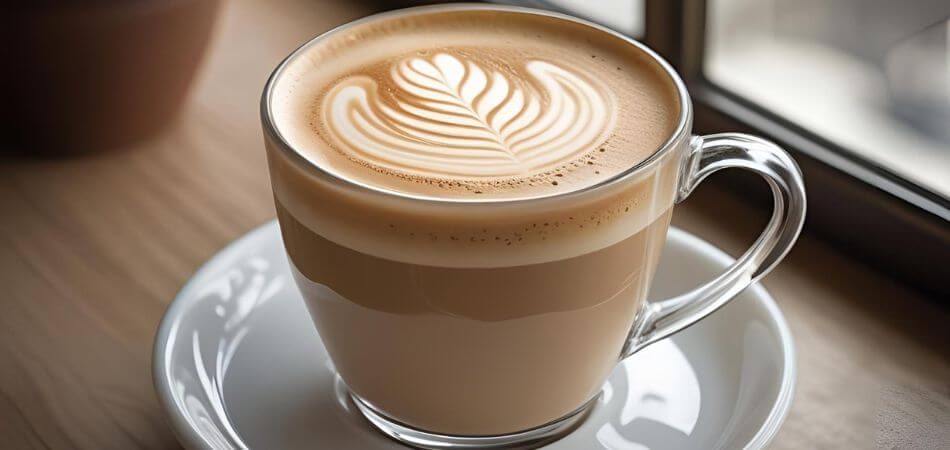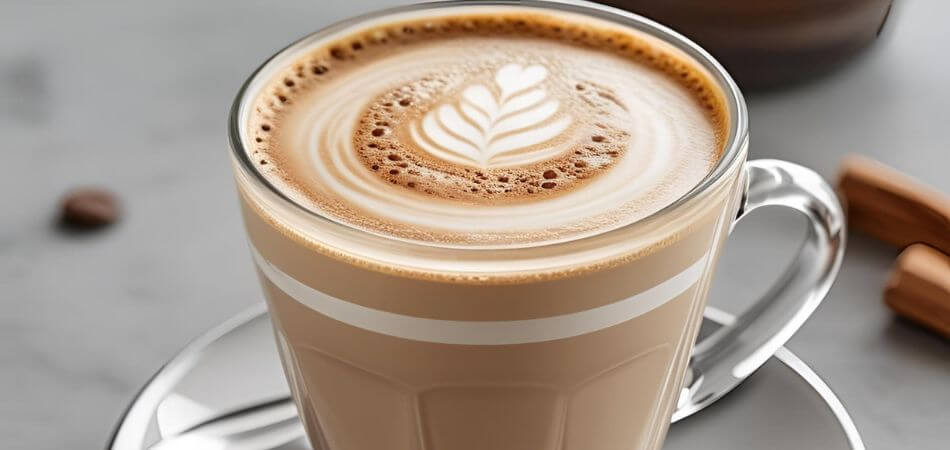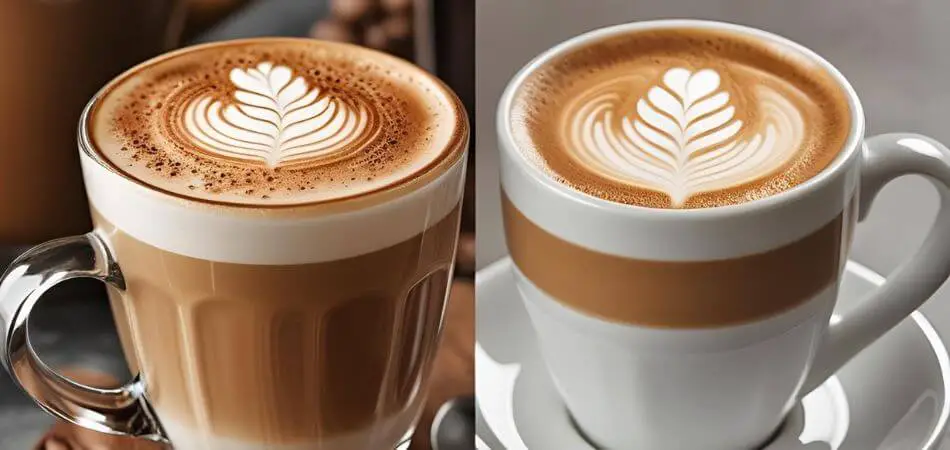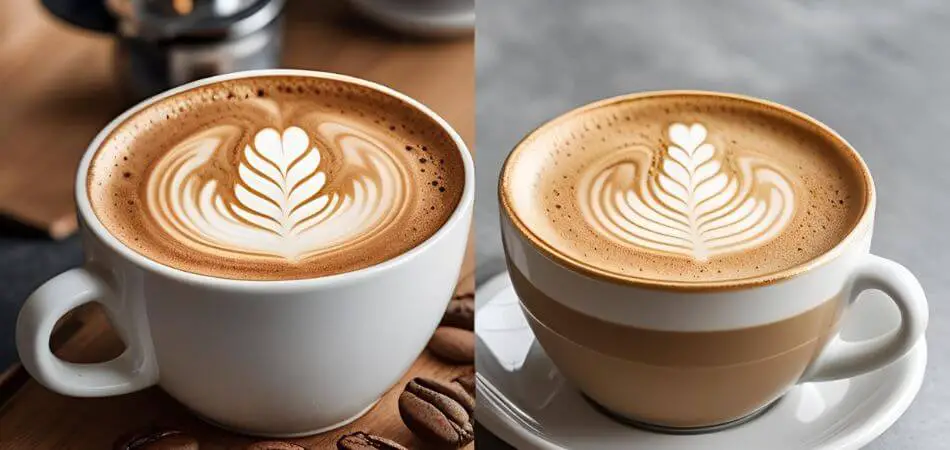Cappuccino vs Latte: A Side-by-Side Comparison
Do you ever stand at a coffee shop, staring at the menu, and wonder—“Should I order a cappuccino or a latte?” You’re not alone! These two espresso-based drinks look similar but offer completely different experiences.
Both the cappuccino and latte start with a shot of espresso and steamed milk, but their textures, flavors, and even serving sizes set them apart. The cappuccino is bold and frothy, while the latte is creamy and smooth. But which one is right for you?
In this guide, we’ll break down:
✔ What makes a cappuccino unique (hello, thick foam!)
✔ Why lattes are so popular (hint: they’re super customizable)
✔ Key differences in taste, texture, and best drinking times
✔ How to choose based on your coffee preferences
By the end, you’ll confidently know whether to order a foamy cappuccino or a silky latte—or maybe both! ☕

What is a Cappuccino?
The Classic Italian Espresso Drink
A cappuccino is a traditional Italian coffee known for its rich espresso flavor and luxurious foam. It’s the perfect balance of strong coffee and velvety milk, making it a favorite for espresso lovers.
Ingredients & Preparation
A true cappuccino follows a 1:1:1 ratio:
- 1/3 Espresso – The strong, concentrated coffee base.
- 1/3 Steamed Milk – Adds creaminess without overpowering the espresso.
- 1/3 Milk Foam – Thick, airy, and slightly sweet.
Taste & Texture
- Flavor: Bold espresso with a slight sweetness from the foam.
- Texture: Light and airy due to the thick foam layer.
- Serving Size: Typically 5-6 oz (smaller than a latte).
When to Drink a Cappuccino
In Italy, cappuccinos are a morning-only drink, often enjoyed with breakfast. The foam helps slow down the espresso’s strength, making it a great mid-morning pick-me-up.
Fun Fact:
The name “cappuccino” comes from Capuchin friars, whose brown robes resembled the drink’s color!

What is a Latte?
The Smooth, Creamy Coffee Favorite
If you prefer a milder, milkier coffee, the latte (short for caffè latte) is your go-to. It’s all about smooth, creamy indulgence with just a hint of espresso.
Ingredients & Preparation
A latte has a higher milk ratio:
- 1/3 Espresso – Provides a gentle coffee kick.
- 2/3 Steamed Milk – Creates a silky, creamy base.
- Thin Foam Layer – Just a light topping (unlike a cappuccino’s thick foam).
Taste & Texture
- Flavor: Mild, milky, and slightly sweet.
- Texture: Ultra-smooth and velvety.
- Serving Size: Usually 8-12 oz (larger than a cappuccino).
When to Drink a Latte
Lattes are versatile—great for:
✔ Afternoon coffee breaks (less intense than a cappuccino)
✔ Flavored versions (vanilla, caramel, or pumpkin spice)
✔ Latte art lovers (more milk = better canvas for designs)
Did You Know?
The latte became popular in the U.S. before Italy, where it was traditionally just a breakfast drink!

Key Differences Between Cappuccino and Latte
Now that we’ve explored each drink individually, let’s put them side by side. Understanding these key differences will help you make the perfect choice every time you order.
1. Milk-to-Espresso Ratio
| Drink | Espresso | Steamed Milk | Foam |
|---|---|---|---|
| Cappuccino | 1/3 | 1/3 | 1/3 (thick) |
| Latte | 1/3 | 2/3 | Thin layer |
Why it matters:
- Cappuccino has equal parts of all three components, creating a balanced but strong coffee experience.
- Latte contains more steamed milk, making it creamier and milder.
2. Foam Thickness & Texture
- Cappuccino:
- Thick, airy foam (about 1-2 cm)
- Light and frothy texture
- Foam should be stiff enough to hold sugar on top
- Latte:
- Thin foam layer (just a few millimeters)
- Silky, velvety mouthfeel
- Designed for latte art pouring
3. Flavor Profile Comparison
Cappuccino:
✔ Strong, bold espresso flavor
✔ Slightly sweet from foam
✔ More intense coffee experience
Latte:
✔ Mellow, milk-forward taste
✔ Creamy and smooth
✔ Better for flavor additions (vanilla, caramel, etc.)
4. Serving Size & Presentation
| Drink | Standard Size | Typical Cup |
|---|---|---|
| Cappuccino | 5-6 oz | Ceramic cup |
| Latte | 8-12 oz | Tall glass/mug |
Pro Tip: In Italy, ordering a cappuccino after 11 AM might get you strange looks – it’s considered a breakfast drink!
5. Customization Options
- Cappuccino Variations:
- Iced cappuccino
- Dusted with cinnamon or cocoa powder
- “Dry” cappuccino (extra foam, less milk)
- Latte Variations:
- Flavored lattes (vanilla, hazelnut, pumpkin spice)
- Alternative milk options (oat, almond, soy)
- Specialty versions (matcha latte, chai latte)
Barista Secret: The more milk in your drink, the better it is for latte art. That’s why you’ll rarely see designs in cappuccinos!

How to Choose: Cappuccino or Latte?
Still undecided? Here’s a simple guide to help you pick your perfect match.
When to Choose a Cappuccino:
✅ You love strong coffee flavor – The equal parts ratio lets espresso shine
✅ You enjoy texture – That thick foam is satisfying to sip through
✅ Morning drinker – Traditional Italian way to start your day
✅ Prefer smaller servings – About 6oz of coffee perfection
“I always get a cappuccino when I need that extra espresso kick in the morning. The foam makes it feel like a special treat!” – Maria, coffee enthusiast
When to Choose a Latte:
✅ You prefer milder coffee – More milk mellows out the espresso
✅ You like customization – Endless flavor possibilities
✅ Afternoon coffee break – Larger size lasts longer
✅ Latte art lover – Instagram-worthy designs
“As someone who doesn’t love bitter coffee, lattes are my go-to. I add vanilla syrup and it’s the perfect sweet, creamy drink.” – James, casual coffee drinker
Decision Flowchart
- Do you want strong coffee flavor?
- Yes → Cappuccino
- No → Latte
- Do you like thick foam?
- Yes → Cappuccino
- No → Latte
- Want to add flavors?
- Yes → Latte
- No → Cappuccino

How to Make Cappuccino and Latte at Home
Want to craft coffeehouse-quality drinks in your own kitchen? Here’s your step-by-step guide to making perfect cappuccinos and lattes at home.
Essential Equipment
Before you begin, you’ll need:
- Espresso machine (or strong brewed coffee as substitute)
- Milk frother (steam wand, electric frother, or French press)
- Thermometer (for perfect milk temperature)
- Quality coffee beans (freshly ground works best)
- Scale (for precise measurements)
Step-by-Step: Making a Cappuccino
- Brew the espresso
- Grind 18-20g fresh coffee beans (fine grind)
- Tamp firmly and extract 30ml espresso (about 25-30 seconds)
- Steam the milk
- Pour 60ml cold milk (whole milk works best)
- Insert steam wand just below milk surface
- Create foam by introducing air for 5-7 seconds
- Heat milk to 60-65°C (140-150°F)
- Assemble your drink
- Pour espresso into preheated cup
- Add steamed milk, then spoon foam on top
- The perfect cappuccino has equal layers
Pro Tip: For a “dry” cappuccino, extend the foaming time to create extra thick foam.
Step-by-Step: Making a Latte
- Brew the espresso
- Same process as cappuccino (30ml espresso)
- Steam the milk
- Use 180ml milk (more than cappuccino)
- Create minimal foam (just a slight ripple)
- Heat to same 60-65°C temperature
- Pour and create art
- Start pouring milk high into espresso
- As cup fills, bring pitcher closer
- Wiggle spout to create designs
Common Mistakes to Avoid:
- Overheating milk (creates scalded taste)
- Insufficient foam for cappuccino
- Pouring milk too fast (ruins layering)
Alternative Methods Without an Espresso Machine
For Cappuccino:
- Brew strong coffee (Moka pot or Aeropress)
- Heat milk separately (microwave or stove)
- Froth milk using:
- French press (pump vigorously)
- Handheld frother
- Mason jar (shake heated milk)
For Latte:
- Make concentrated coffee
- Heat more milk than for cappuccino
- Gently pour over coffee
Milk Options and Their Effects
| Milk Type | Foam Quality | Taste Profile | Best For |
|---|---|---|---|
| Whole Milk | Thick, creamy foam | Rich, sweet | Traditional style |
| Skim Milk | Lots of foam, less creamy | Light taste | Foam lovers |
| Oat Milk | Good foam, slightly sweet | Nutty flavor | Dairy-free |
| Almond Milk | Thin foam, separates easily | Distinct nutty taste | Low-calorie option |
Expert Advice: For best results, use cold milk straight from the refrigerator and always purge your steam wand before and after use.

Creative Variations to Try
Once you’ve mastered the basics, experiment with these delicious twists on classic cappuccinos and lattes.
Cappuccino Variations
- Iced Cappuccino
- Pour espresso over ice
- Add cold frothed milk
- Top with cold foam
- Flavored Cappuccino
- Add cinnamon or cocoa to grounds before brewing
- Dust with spice blends (cardamom, nutmeg)
- Rim cup with flavored sugar
- Mocha Cappuccino
- Add chocolate syrup to espresso
- Top with cocoa-dusted foam
Latte Variations
- Vanilla Latte
- Add 1 tsp vanilla syrup
- Optional caramel drizzle
- Dalgona Latte
- Whip equal parts instant coffee, sugar, and hot water
- Top over iced milk
- Matcha Latte
- Whisk 1 tsp matcha powder with hot water
- Add steamed milk
- Turmeric Latte (Golden Milk)
- Mix turmeric, cinnamon, and ginger
- Combine with warm milk
Seasonal Specials
Fall Favorite:
- Pumpkin Spice Latte
- Add pumpkin puree and spices
- Top with whipped cream
Winter Warmer:
- Peppermint Mocha Cappuccino
- Mint syrup with chocolate
- Crushed candy cane garnish
Pro Tip: When making flavored drinks, add syrups to the espresso before milk to ensure even distribution.
Conclusion: Finding Your Perfect Cup
After exploring the rich world of cappuccinos and lattes, you’re now equipped to make informed choices about your coffee preferences. Let’s recap the key takeaways:
Final Comparison
Choose Cappuccino If You:
- Crave strong espresso flavor
- Enjoy thick, airy foam
- Prefer smaller, more concentrated drinks
- Want a traditional Italian experience
Choose Latte If You:
- Like creamy, milk-forward coffee
- Want to customize with flavors
- Prefer larger servings
- Appreciate latte art
The Verdict
There’s no “better” drink – it all depends on your mood and taste preferences. Many coffee lovers enjoy both at different times:
- Morning: Cappuccino for an energizing start
- Afternoon: Latte for a creamy pick-me-up
- Special occasions: Flavored versions of either
Your Coffee Journey
Why not conduct your own taste test? Try both drinks side-by-side and note:
- Which texture you prefer
- How the flavors differ
- When each one satisfies you most
We’d love to hear: Which team are you on – Team Cappuccino or Team Latte? Share your preference in the comments below!
Remember, the best coffee is the one you enjoy most. Whether you’re a foam enthusiast or a latte art admirer, there’s a perfect cup waiting for you. Happy brewing! ☕
FAQs
Which is stronger, latte or cappuccino?
A cappuccino is stronger than a latte—it has less milk and more espresso concentration per sip.
Why do people prefer cappuccino?
People prefer cappuccinos for their perfect balance of espresso, steamed milk, and velvety foam, offering a creamy, smooth texture and rich coffee flavor. ☕
(Bonus: The foam helps retain heat and enhances aroma, making it a comforting choice!)
What is a cappuccino without milk called?
Shake cold brew, vodka & coffee liqueur vigorously with ice for 20 seconds – the proteins in cold brew create luxurious foam!” ☁️🍸
(Bonus tip: Add ½ tsp maple syrup as a natural froth booster!)
Is a latte a cappuccino without foam?
Shake cold brew espresso martini vigorously with ice for 15+ seconds – the proteins in cold brew and any dairy/cream will create luxurious foam.” ☁️🍸
(Bonus tip: Use fresh cold brew concentrate and chill all ingredients first for maximum froth!)







